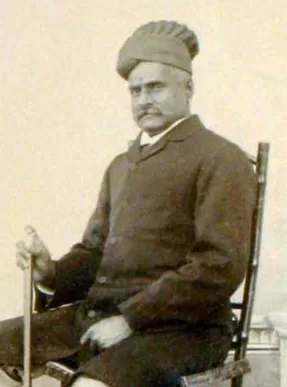When it comes to art and paintings, India boasts a treasure of talent that has left a mark on the world of visual art. From timeless classics to contemporary masterpieces, Indian painters have created a legacy that continues to inspire art enthusiasts worldwide. Let us introduce you to 10 famous Indian painters that you should definitely know about.
02/111. Raja Ravi Varma (1848-1906)

Raja Ravi Varma’s work was groundbreaking in its time. He’s often hailed as the father of modern Indian art for his detailed and realistic portrayals of Hindu deities and mythological scenes. What made his art truly special was his ability to seamlessly blend European academic realism with Indian subjects. His iconic pieces like “Shakuntala,” “Damayanti and the Swan,” and “Radha and Krishna” still transport viewers to a timeless world of beauty and devotion.
Image: Wikipedia
03/11Amrita Sher-Gil (1913-1941)

Amrita Sher-Gil’s art was a journey through personal struggles and societal norms. Her works boldly conveyed deep emotions and the realities of her time. Her use of vibrant colors and her focus on the human form were transformative. In her self-portraits, “Bride’s Toilet,” and “Three Women,” you can sense the unfiltered expressions that make you ponder the complex narratives behind her art.
04/11Jamini Roy (1887-1972)

Jamini Roy’s art celebrated the simplicity of everyday life and indigenous culture. His folk-inspired style, characterized by bold lines, flat colors, and simple compositions, resonated with the rustic charm of rural India. Works like “Three Pujarins,” “Alpona Dancers,” and “Mother and Child” invite you to appreciate the unsung heroes of rural life.
Image Pinterest
05/11Abanindranath Tagore (1871-1951)

Abanindranath Tagore was a visionary who aimed to revive traditional Indian painting styles with modern elements. His pieces like “Bharat Mata,” “Radha and Krishna,” and “The Passing of Shah Jahan” beautifully juxtapose the old and the new, weaving together India’s rich heritage.
image : Cultural India
06/11Nandalal Bose (1882-1966)

Nandalal Bose’s nationalist and patriotic paintings resonate with a deep love for his homeland. “Bapuji” pays homage to Mahatma Gandhi, while “Santals” and “Saraswati” connect deeply with the cultural essence of India, breathing life into the nation’s spirit.
Image: Pinterest
07/11Rabindranath Tagore (1861-1941)

Nobel laureate Rabindranath Tagore’s artistic endeavors were an extension of his literary and philosophical pursuits. His paintings capture the essence of nature and the human form in their purest forms. “Self-Portrait,” “The River,” and “The Tree” embody Tagore’s spiritual connection with the world around him, offering a respite from the chaos of modern life.
Image: Pinterest
08/11M. F. Husain (1915-2011)

M. F. Husain was a prolific and controversial artist. His bold use of color and often provocative subject matter challenged conventions. Works like “The Last Supper,” “Mother Teresa,” and “Benares” reveal Husain’s unapologetic approach, using art as a powerful medium for self-expression and societal critique.
Image: Pinterest
09/11Tyeb Mehta (1925-2009)

Tyeb Mehta’s abstract art broke free from traditional boundaries. His use of bold colors and striking shapes conveyed profound emotions. “Mahishasura,” “Falling Bird,” and “Kali” engage viewers in a mesmerizing dance of color and form, urging them to explore the limitless bounds of abstraction.
10/11S. H. Raza (1922-2016)

S. H. Raza, the French-Indian artist, embraced geometric shapes and vibrant colors to convey a sense of unity that transcended the visual world. His “Bindu,” “Saurashtra,” and “La Terre” invite viewers to contemplate the mystical depths of his art.
Image: Cultural India
11/11Vasudeo S. Gaitonde (1924-2001)

Vasudeo S. Gaitonde’s abstract paintings are an exploration of the inner self and the metaphysical. The muted colors and atmospheric quality in work, evoke a deep sense of serenity, inviting viewers to introspect and connect with their inner selves.
Image: Vadehra Art Gallery

